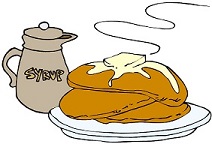

Sequence of Events3rd Grade |
|
|---|---|
Alabama Course of Study Standards: 22 |
|
Describe literary elements within a story, including setting, plot, characters, and themes. |
|
Arizona Academic Standards: 3.RL.3Common Core State Standards: Literacy.RL.3.3Georgia Math and ELA Standards: ELAGSE3RL3 |
|
Describe characters in a story (e.g., their traits, motivations, or feelings) and explain how their actions contribute to the sequence of events |
|
North Carolina - Standard Course of Study: RL.3.3Tennessee Academic Standards: 3.RL.KID.3 |
|
Describe characters in a story and explain how their actions contribute to the sequence of events. |
|
New Jersey Student Learning Standards: RL.3.3 |
|
Describe the characters in a story (e.g., their traits, motivations, or feelings) and explain how their actions contribute to the plot. |
|
New York State Next Generation Learning Standards: 3R3 |
|
In literary texts, describe character traits, motivations, or feelings, drawing on specific details from the text. (RL) |
|
Wisconsin Academic Standards: R.3.3 |
|
Describe a character (traits, motivations, feelings) drawing on specific details from the text. (RL) |
|
Pennsylvania Core Standards: CC.1.3.3.C |
|
Describe characters in a story and explain how their actions contribute to the sequence of events. |
|
Pennsylvania Core Standards: E03.A-K.1.1.3 |
|
Describe characters in a story (e.g., their traits, motivations, feelings) and explain how their actions contribute to the sequence of events. |
|
 3rd Grade Reading - Sequence of Events Lesson
3rd Grade Reading - Sequence of Events Lesson




